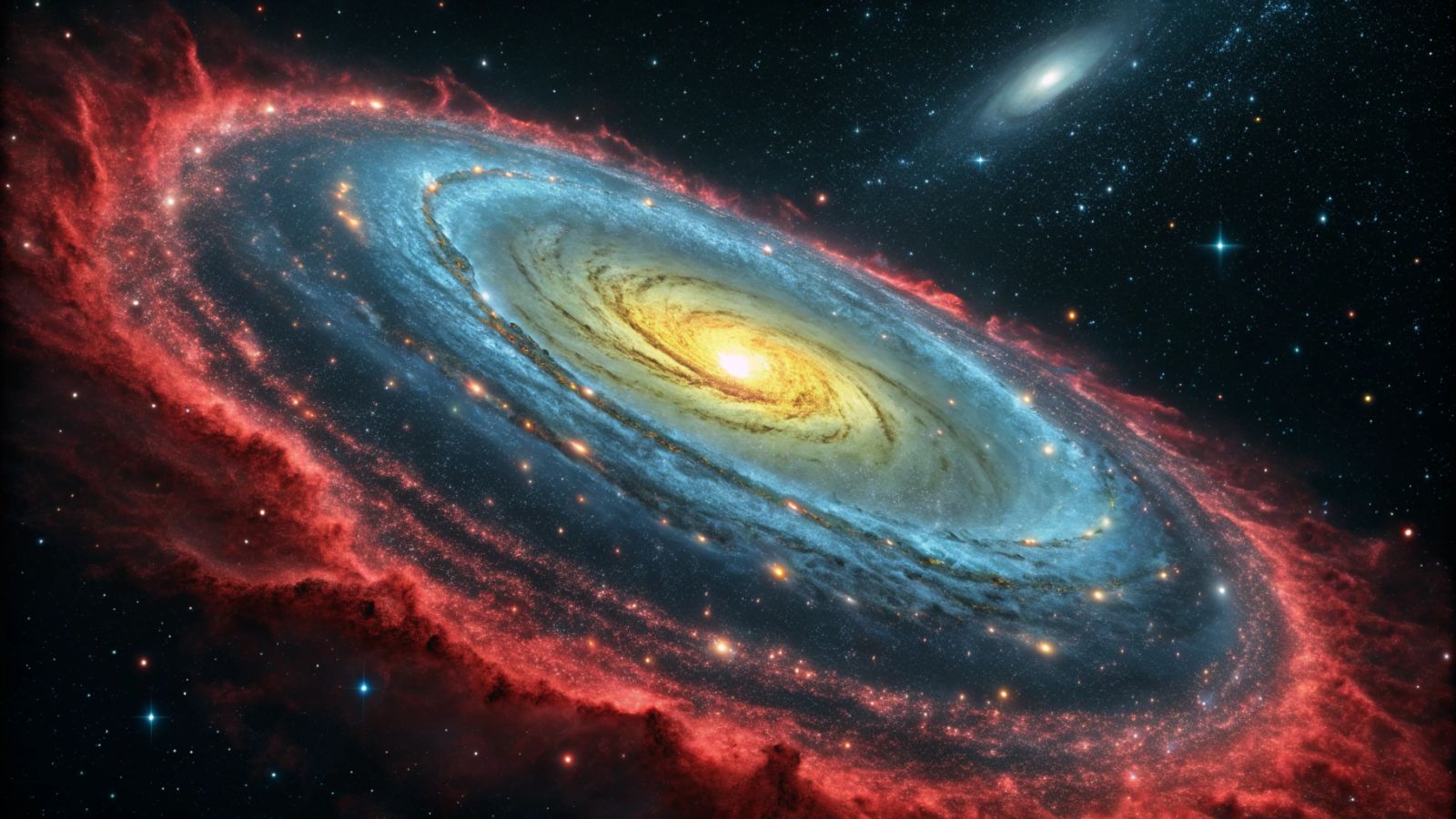An unimaginably hot envelope surrounds our galaxy: where does it come from? 🔥
Follow us on Google News (click on ☆)
For several decades, astronomers have known that our galaxy is surrounded by a vast halo of gas. This gas, though difficult to observe due to its low density, extends up to 700,000 light-years and reaches temperatures of several million degrees Kelvin (several million degrees Fahrenheit). The gravitational forces of the Milky Way might explain part of this phenomenon, but new evidence suggests that even more energetic processes are at play.

Illustration intentionally exaggerated
Researchers from the Raman Research Institute (RRI) and their collaborators have recently analyzed signals emitted by this hot matter. Through studies published in The Astrophysical Journal, they propose a model linking this heat to massive stars at the end of their life cycles. These stars, after their explosions as supernovae, release vast amounts of energy and enrich the surrounding gas with complex chemical elements.
These explosions, which occur in regions of the galactic disk where star formation is intense, are thought to be responsible for the constant heating of the surrounding gas. This gas, heated to temperatures of 10 million degrees Kelvin (approximately 18 million degrees Fahrenheit), expands and forms a hot halo around the stellar disk. As it moves, some of this gas flows back into the disk or escapes into intergalactic space.
The analysis of light spectra from distant quasars has confirmed the presence of gas enriched with elements like magnesium and sulfur. These chemical signatures, resulting from nuclear reactions in the cores of massive stars, have provided crucial clues about the composition of the hot gas and its origin. This gas also absorbs light from distant sources, creating distinctive absorption lines.
Another intriguing phenomenon involves so-called "runaway stars." These stars, ejected from the galactic disk, sometimes explode as supernovae outside of it, creating localized pockets of heated gas.
This model could help better understand energetic processes within the Milky Way. By analyzing X-ray emissions and extending observations to other frequencies, researchers hope to refine these hypotheses and uncover the mysteries of this burning gas.